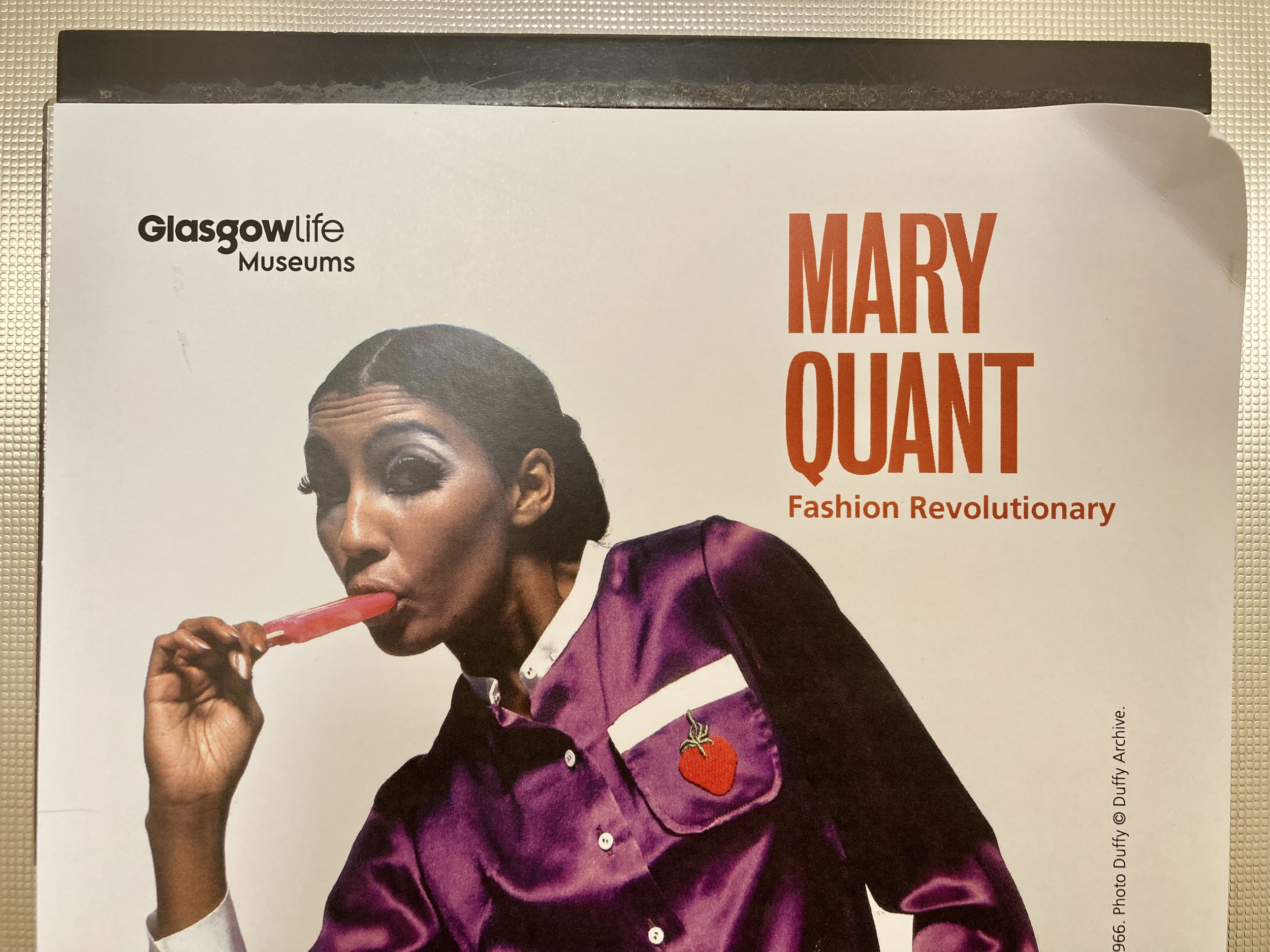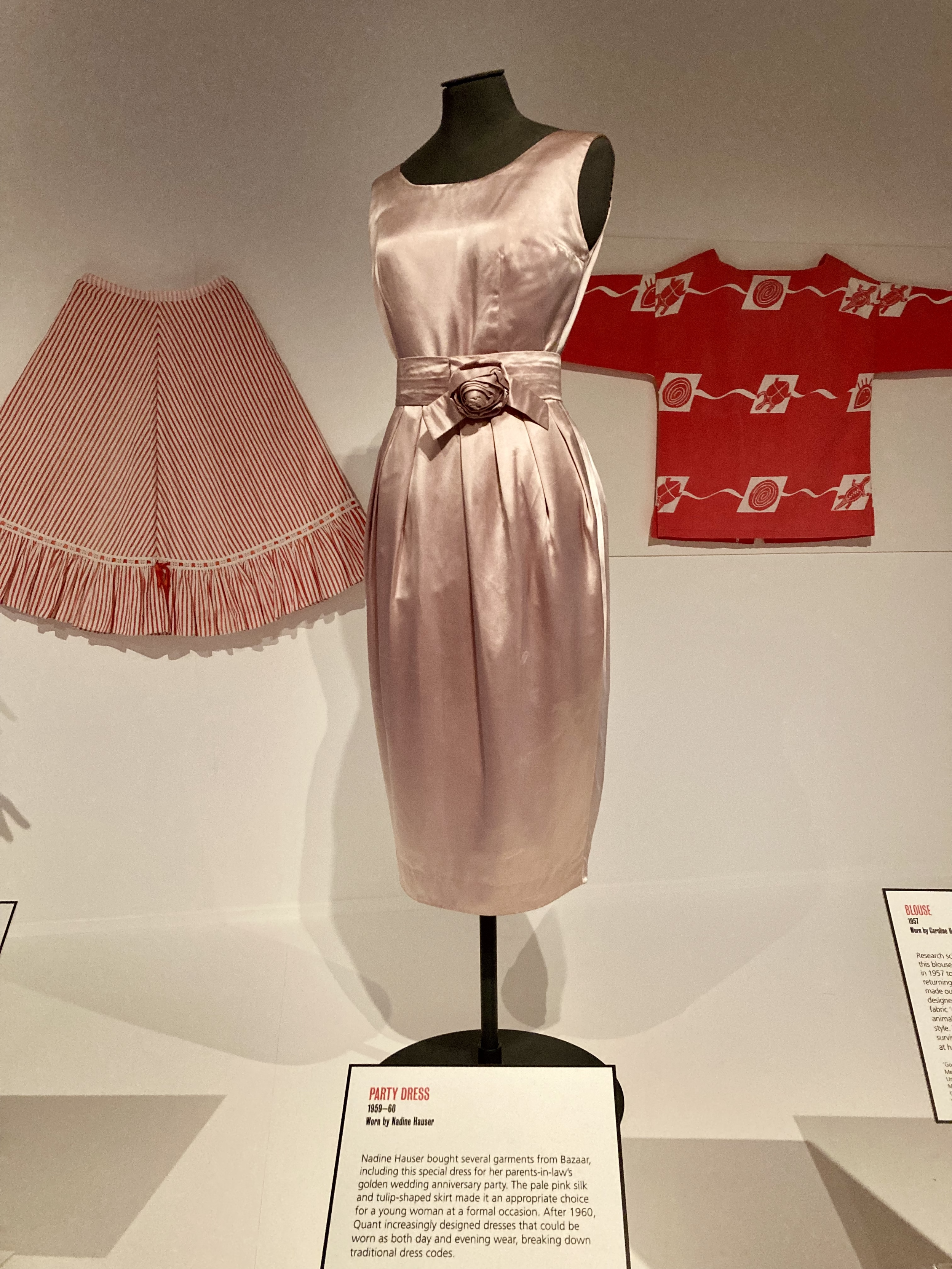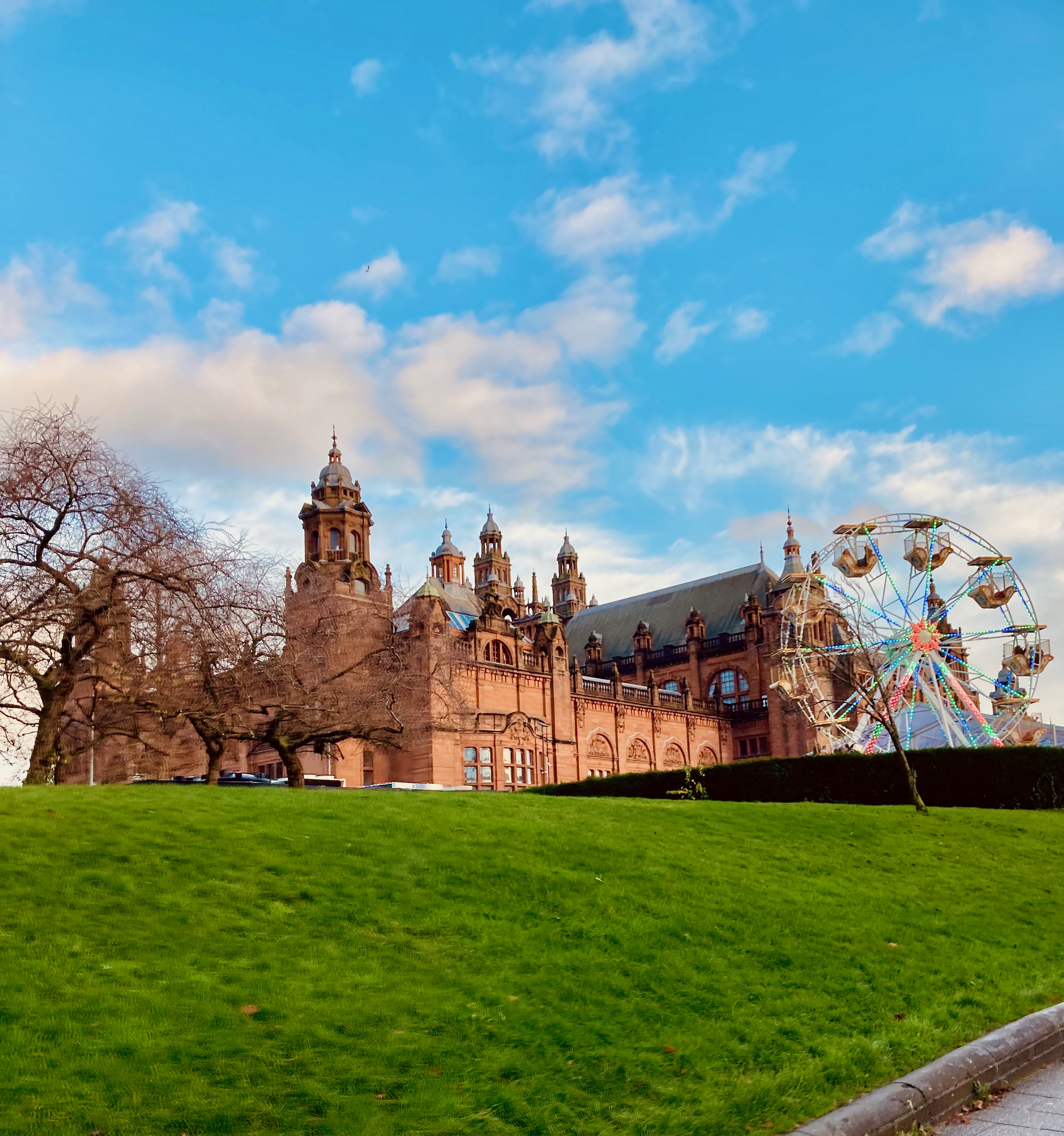Mary Quant celebrated as fashion revolutionary in Glasgow Kelvingrove exhibit
The exhibition will run from May 20th-October 22nd, 2023, following the designer’s passing
Mary Quant wearing a self-designed mini dress in the mid-sixties (1966). Photo credit: Jack de Nijs/Anefo.
Mary Quant is remembered as a fashion revolutionary in Glasgow’s latest Kelvingrove exhibit, now open to the public.
Just months after her death earlier this spring (aged 93), the museum is housing ‘Mary Quant: Fashion Revolutionary’, a capsule of her life and looks.
It’s the last chance to see the V&A’s international display, which features over 100 garments, photographs, accessories, and cosmetics before it’s all packed up for good.
Who’s ‘Fashion Revolutionary’ for?
Whether you’re a fashion enthusiast or a local looking for something to do, the exhibition is a must-visit. It showcases accessories from Quant’s personal collection and offers an in-depth look at her career from the 1950s to the ‘70s.
Beyond clothing, Quant's impact on popular culture is explored through an assortment of makeup and range of brightly-dressed dolls.
Pieces worn by supermodels Pattie Boyd, Jean Shrimpton and Twiggy are also on show.
Poster advertising the exhibition, taken in the building. Photo credit: Lauren Burns.
Located on the basement level of the prestigious Glasgow Art Museum, the space holds a comprehensive collection that is often cited as empowering a generation.
“I thought it was brilliant,” Dr Naomi Braithwaite, Senior Lecturer in Fashion Marketing and Branding at Nottingham Trent University said of the exhibit. “I think it really represented Quant, but not just that, it showed how she fitted in with the wider cultural environment and contribution to the revolution of high street fashion to what was happening in the sixties with the youthquake and feminism.
You really get to feel Quant's place, not just in fashion but in cultural history. I think the exhibition now, when people go and see it, I think they'll see more about Mary Quant's legacy and I think perhaps that's more meaningful now that she, sadly, passed away.”
Video created by Lauren Burns using CapCut.
Returning to her life, the chronological arrangement provides an overview of Quant’s career, starting with her youth as a Goldsmith’s student and ending with the brand’s success.
A timeline of Mary Quant’s life and career
Quant was born in the 1930s, and by the 1960s, the Londoner was an established name in 20th-century fashion.
The “mother of the mini-skirt” opened her first Bazaar boutique on King’s Road in 1955. It quickly became popular with the ‘Chelsea Set’ and made Quant a stalwart of the ‘Swinging Sixties’ and feminist movement. Her black daisy logo, stemming from a scribble, soon became world-famous.
The exhibition’s focus on just two decades means guests see only a snapshot of the designer’s lifetime, but there was more to it.
Timeline made by Lauren Burns using Genially.
Quant’s legacy according to a fashion expert
Quant died on April 13th, prompting tributes to roll in from across the fashion world, who hailed her as a trailblazer.
In reference to her legacy, Braithwaite said: “I think people will always associate and revere the design. So the miniskirts, the PVC boots. But I think also how she caused this idea of the youthquake. I think that's going to be a really important part of her legacy. Her legacy is quite multiple in many ways.
“It wasn't just the clothing, it was who she was as well. I think that was very much part of it. It wasn't just the designs, it was the person behind them and everything that she represented as an individual.
“The most remarkable thing she did was she made fashion available to everybody who wanted to have it at an affordable, accessible price. So, I mean, in many ways, one might say now that's not such a good thing with sustainability, but at the time it was really revolutionary. So it meant that people could have affordable design.”
“It wasn’t just the clothing, it was who she was as well. I think that was very much part of it. It wasn’t just the designs, it was the person behind them and everything that she represented as an individual.”
On exit, visitors can sign a guest book and walk through a gift shop filled with exclusive fashion, books, and trinkets.
All photos were taken at Kelvingrove by Lauren Burns.
How to visit the Mary Quant exhibition
'Mary Quant: Fashion Revolutionary' is in Glasgow until October 22nd. Final tickets can be bought online, from the museum shop or by calling: 0141 276 9576.
Tickets are also available at the door on a first-come-first-serve basis. On select dates, Curator of European Dress and Textiles, Rebecca Quinton, will be on hand to answer any questions and talk visitors through the histories of individual exhibits.
Adult entry is priced at £8.50, while concession tickets cost £6.50, and children under 12 go free.
by Lauren Burns
✿






